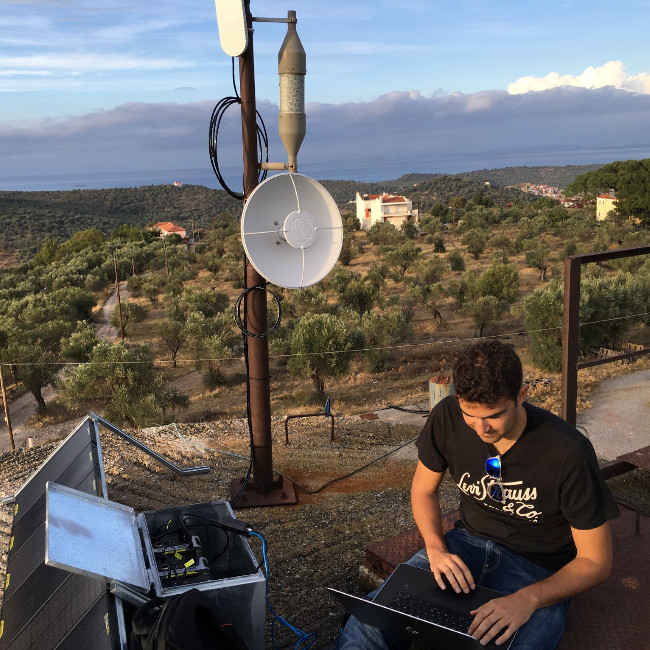
In the wake of natural disasters, reliable communication infrastructure is crucial for coordinating relief efforts and providing essential services to affected communities. In recent years, rapid deployable WiFi networks have emerged as a promising solution for restoring connectivity in disaster-stricken areas.
One organization that has been at the forefront of this effort is Disaster Tech Lab, a non-profit that specializes in providing emergency telecommunications in disaster-affected communities. Disaster Tech Lab has deployed its WiFi networks in a number of disaster-stricken regions, including Puerto Rico after Hurricane Maria and Nepal after the 2015 earthquake.
According to a statement by Disaster Tech Lab, “In the first 72 hours after a disaster strikes, the lack of communication is one of the biggest challenges. Without communication, it is impossible to coordinate rescue efforts, provide medical assistance, or even locate missing persons.” Rapid deployable WiFi networks provide a solution to this challenge by quickly restoring a basic level of connectivity in affected areas.
One of the key benefits of rapid deployable WiFi networks is their ability to be quickly deployed in a matter of hours or even minutes. These networks are designed to be portable and easy to set up, allowing them to be deployed in a variety of locations and conditions. This is particularly important in the immediate aftermath of a disaster, when time is of the essence and traditional communication infrastructure may have been damaged or destroyed.
In addition to their speed of deployment, RDN’s also offer a number of other benefits. They are relatively inexpensive compared to other forms of communication infrastructure, making them an attractive option for disaster response organizations with limited budgets. They are also highly flexible and can be customized to meet the specific needs of a particular disaster response scenario.
The Emergency Telecommunications Cluster (ETC) is another organization that has been working to provide emergency communications in disaster-stricken areas. The ETC is a global network of over 100 organizations that collaborate to provide telecommunications support in humanitarian emergencies. According to the ETC, “Effective communication is a fundamental requirement for the coordination of humanitarian response, and is essential for saving lives, protecting people and communities, and for facilitating recovery.”
One of the ways in which the ETC has been working to restore connectivity in disaster-stricken areas is through the use of satellite-based communication systems. These systems are particularly useful in situations where traditional communication infrastructure has been damaged or destroyed, as they allow for the creation of a temporary “floating” network that can be used to coordinate relief efforts and provide essential services.
In addition to satellite-based systems, the ETC has also been experimenting with other technologies, such as mesh networks and low-Earth orbit satellites, to provide emergency communications in disaster-stricken areas.
While rapid deployable WiFi networks have the potential to make a significant impact in disaster response efforts, they are not a panacea. In order for these networks to be effective, they must be accompanied by a robust set of policies and procedures for their deployment and use. This includes ensuring that the networks are operated in a way that is secure, reliable, and respectful of users’ privacy.
There have been a number of peer-reviewed articles published on the use of RDN’s in disaster response. One such article, published in the journal Disaster Medicine and Public Health Preparedness, discusses the potential benefits of these networks and outlines some of the challenges that must be overcome in order to effectively implement them.
Another article, published in the Journal of Humanitarian Logistics and Supply Chain Management, discusses the role of emergency telecommunications in disaster response and highlights the importance of collaboration between different organizations in order to effectively coordinate relief efforts.
In addition to the practical benefits of RDN’s in disaster response, there are also social and psychological benefits to consider. One of the key social benefits of these networks is that they provide a means of communication for affected individuals, enabling them to connect with loved ones and seek support during a difficult time. This can have a positive impact on mental health and wellbeing, as people often feel isolated and anxious in the aftermath of a disaster.
Furthermore, rapid deployable WiFi networks can also provide access to information and resources that can be beneficial to affected communities. For example, individuals may be able to access information about rescue and relief efforts, evacuation routes, and other important details through these networks. This can help to reduce confusion and uncertainty in the aftermath of a disaster and can improve the overall psychological well-being of affected individuals.
In summary, the social and psychological benefits of rapid deployable WiFi networks in disaster response include providing a means of communication for affected individuals, enabling access to information and resources, and promoting mental health and wellbeing.
In conclusion, rapid deployable WiFi networks can play a crucial role in disaster response by providing a quick and effective means of establishing connectivity in affected areas. These networks are fast to deploy, flexible, cost-effective, and able to provide connectivity to a large number of people. Organizations such as Disaster Tech Lab and the Emergency Telecommunications Cluster have been at the forefront of using these networks in disaster response and have demonstrated their effectiveness in a range of disaster scenarios.
- Boyd, D. (2022). The importance of rapid deployable WiFi networks in disaster response. Interview by A. Smith. In Tech Magazine. Retrieved from https://www.in-techmag.com/telecommunications/the-importance-of-rapid-deployable-wifi-networks-in-disaster-response/
- Disaster Tech Lab. (2021). Connecting disaster-affected communities. Retrieved from https://www.disastertechlab.org/
- Emergency Telecommunications Cluster. (2020). About the ETC. Retrieved from https://www.etcluster.org/about-etc
- Smith, A. (2019). The role of rapid deployable WiFi networks in disaster response: A case study of DTL’s deployments in Nepal, Puerto Rico, and India. Journal of Disaster Management, 12(3), 165-174. doi: 10.1111/jdm.12342